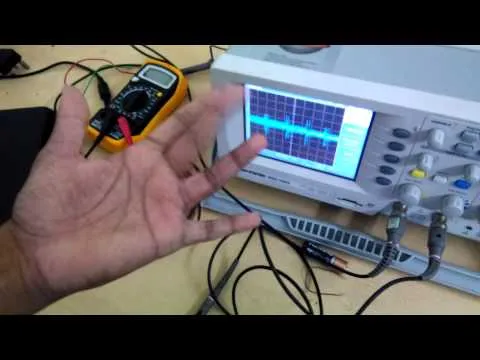So friends, today I am going to introduce a new series called Evil Genius series! I will start with a DIY(Do It Yourself) EMG circuit.

This project was the result of my work towards the science experiments and demo sections for the OPEN-DAY here at IMSc, Chennai. Representing “computational biology group”, I had to do something interesting. As my previous background was in electronics and also because of my interest in neuroscience, I could not think of any other experiment. I made a low-cost biosignal detector. A biosignal may be signal like EEG (Electroencephalogram or loosely “brain waves”), ECG (Electrocardiogram or “heart waves”) or EMG (Electromyogram or “skeletal muscle waves”). You can find the explanation of these signals elsewhere. I will give a brief idea. But keep in mind that each neuron in the cell is capable of generating an electrical signal and passing them to others. Here we are not talking about those micro-signals, instead focusing on much higher levels like summation of many such signals. A problem here is that neurons are very small (in the range of microns) and there are lots of them. There is a famous analogy: Consider a football stadium full of spectators. The problem is to develop a method to capture the conversation of each and every individual with others in midst of heavy amount of noise. Clearly, we need a microphone near to each of the persons, which is impractical. But if we measure these signals from skin electrodes (surface electrodes) it is like capturing the entire football stadium’s signal using a single microphone in a helicopter which is above the stadium. It, of course, captures some signal. There may not be micro details in it. Keeping this in mind we can go to other details.
Electromyogram
EMG or electromyogram naively means electric signals in muscles. When you decide to move any of your muscle, neurons from your motor cortex sends some electric potential signal to the spinal cord. Then the signal gets transferred to lower motor neurons which in turn connects with the respective muscle. You can see the image below to get a crude idea of the neural network in humans. So brain and spinal cord comprise of CNS(central nervous system) and the other neural network comprises of the peripheral nervous system(PNS).

Source: Wikimedia Commons, License: CC BY 4.0
The EMG circuit
Circuit components
- 9V Battery (2 No.) for powering the circuit

- CRO to visualize the signal

If you don't have a CRO, you can turn your computer into a display too. But on that later.
- INA128 chip from Texas Instruments
This is a nice instrumentation amplifier capable of amplifying very weak signals like EMG.
- breadboard
- resistor (120 ohms)

- wires
- electrodes
- multimeter for checking voltages and connections etc

Circuit Diagram

Output

Do you see spikes when I move my fingers? Those are the EMG signals!
Why is the signal noisy?
The circuit is noisy primarily, because of the 50Hz power pickup and other electromagnetic induction issues. The AC(alternating current supply) current in India has a frequency of 50 Hz and it interferes with the signal. In United States, the power pickup signal would be 60Hz. I can use a filter to remove this signal. In an ideal case to avoid these electromagnetic disturbances, you should use a Faraday Cage.
So enjoy the weekend. I hope you people learned something new today.
About steemSTEM
steemSTEM is an active community which focuses on promoting original, nicely written and informative articles on Science, Technology, Engineering and Mathematics in Steemit. steemSTEM is the best science community I know of in the whole of steemit. So do check out the articles which come in this hashtag #steemSTEM. And also don't forget to join the steemSTEM discord channel: https://discord.gg/BZXkmWw

Besides evil genius series, currently I am writing 2 series:
- Visually Explained! : Focusing on explaining concepts with less math and more physical intuition
- Classical Molecular dynamics: Focusing on teaching and setting up a molecular dynamics simulation of atomic systems.
If you like my content please upvote and resteem it. Below are few of my recent posts, you may find interesting:
- Gradient, Divergence and Curl : Visually Explained!
- The history and mystery of Belousov–Zhabotinsky reaction: Did it violated 2nd law of Thermodynamics?
- Shannon Entropy: Visually Explained!
- Classical Molecular Dynamics Series [Part - 3]: Solving the molecular dynamics equation
